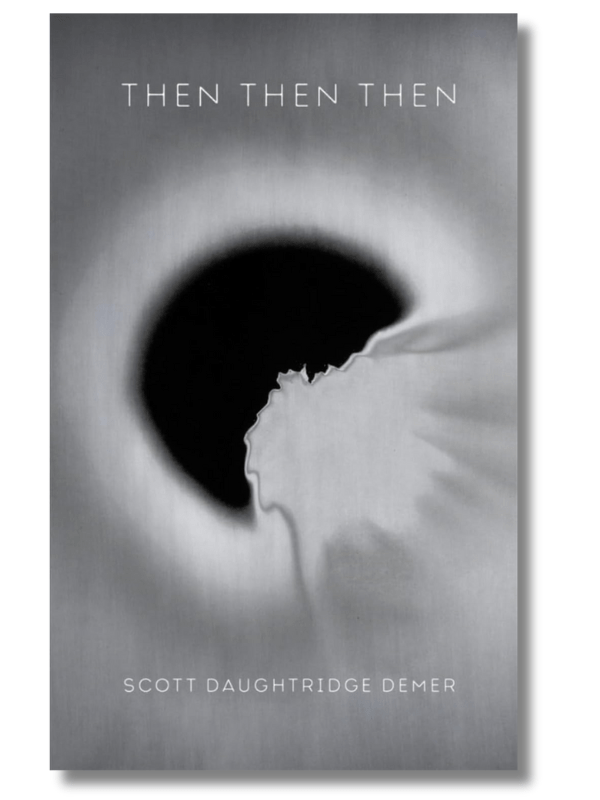Then Then Then
by Scott Daughtridge Demer
Genre: Literary Fiction
ISBN: 9798305679144
Print Length: 117 pages
Publisher: Kernpunkt Press
Reviewed by Peter Hassebroek
Raw imagery abounds in this engrossing experimental novella chronicling a painter’s fusion with his art.
An unsuccessful artist and art teacher of middling success comes across, perhaps fatedly, an unmarked book in an art library by a physicist named Katarina Navanri. Its title, like the identity of the protagonist, is indiscernible. The text contains abstract notions on how to transcend human limitations, such as: “Has anyone truly committed themselves to finding the combination that will unveil the true world? Have I? Every day, I work myself to warp, but further exertion is possible. Have you? What will we sacrifice in our pursuit?”
Prompts like this induce the disillusioned artist to devote five years creating a painting that actualizes these messages. It’s a trial-and-error approach, working through several layers, until at last he stops to then spend another year “listening” to the painting, still to no avail.
Rather than give up or admit Navanri is wrong, the artist decides to physically eat the painting. About 200 square feet of canvas containing five year’s worth of pigments, tears, seeds, glue, hair, and other items. It’s an absurd proposition yet one plausible enough to not fall into the realm of magical realism. Naturally, at times, with nails for instance, strategies must be developed to manage the physical and mental challenges.
“Tell it thank you for teaching you about patience, silence, and stillness. Warm it with sour breath for nine days. Ask if it’s ready . . .”
I don’t need to spoil the full, let’s call it recipe, because this much reveals not only the artist’s state of mind but also that his quest demands as much creative effort as the painting itself. Which the protagonist must realize because the meticulously described undertaking is being webcast.
As expected, it’s a struggle, takes a long time, and very little goes down smoothly. The physiological effects of ingesting toxic, dangerous materials on his whole body are startling. Yet stopping is never an option and persistence leads to the coming together of artist and art in ways that may or may not fulfill his interpretation of Navanri’s vision.
This is an experimental work with an equivocal title, but the narrative of Then Then Then is straightforward, at least in the first part. A consistent use of the past and present tense keeps the reader orientated whenever his account alternates between the more lucid life events that led to the painting’s consumption and the consumption itself.
The artist’s matter-of-fact voice dissuades any inclination to be put off by his actions or its graphically palpable descriptions. In fact, it’s easy to pull for this possibly deranged man, to empathize with his situation and understand his motivations. Enough to go along with the preposterousness of his mission and wish him success. Or at least survival.
The narrative becomes more imaginatively surreal as the corporeal and psychological consequences take effect. The reader can no longer remain detached to avoid being drawn into the protagonist’s state of mind. It’s a fascinating ride to share with an artist whose dogged determination braves potential hazards to realize a vision. A vision he likely will not fully grasp until reached.
There’s no filler in this novella. Then Then Then is a tidy, near perfectly encapsulated metamorphosis of art and artist taken to an extreme.
Thank you for reading Peter Hassebroek’s book review of Then Then Then by Scott Daughtridge Demer! If you liked what you read, please spend some more time with us at the links below.
The post Book Review: Then Then Then appeared first on Independent Book Review.
